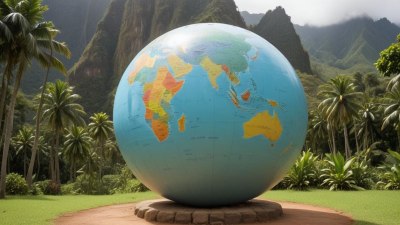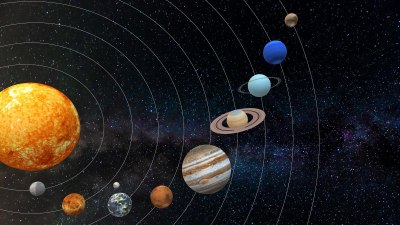Why the Equator Is the World’s Most Relatable "Can’t Catch a Break" Zone
Explore the quirks of the Equator, the challenges it faces, and why it's the ultimate 'Can't Catch a Break' zone.

This image was created with the assistance of Freepik
The Equator, often hailed as the dividing line between the Northern and Southern Hemispheres, is not just a geographical marker; it’s also a zone that offers a unique set of challenges and opportunities. This imaginary line encircles the Earth and has profound implications on climate, culture, and ecology. Many people might not realize that, despite its symbolic significance, the Equator can be seen as the world’s most relatable ‘Can’t Catch a Break’ zone. In this article, we will explore the distinct characteristics of the Equator, the challenges faced by equatorial countries, and why this region can easily resonate with the concept of perpetual struggle.
The Geographic and Climatic Landscape of the Equator
The Equator spans approximately 40,075 kilometers (24,901 miles) and crosses 13 countries: Ecuador, Colombia, Brazil, Gabon, Republic of the Congo, Democratic Republic of the Congo, Uganda, Kenya, Somalia, Indonesia, Kiribati, Maldives, and São Tomé and Príncipe. This geographical feature not only dictates the climate of these regions but also influences the biodiversity, agriculture, and even the lifestyle of the people residing there.
One of the most notable characteristics of equatorial regions is their climate. The Equator experiences a tropical rainforest climate, characterized by high temperatures and significant rainfall throughout the year. Unlike temperate climates, which experience distinct seasons, equatorial regions often face consistent weather patterns that can lead to extreme humidity and a seemingly endless cycle of rainfall and sunshine. While this may sound idyllic, it can pose several challenges for the inhabitants of these regions.
Climate Challenges and Vulnerabilities
One of the primary reasons the Equator can be seen as a ‘Can’t Catch a Break’ zone is the challenges posed by its climate. The intense heat and humidity can lead to various health issues, including heat exhaustion and vector-borne diseases such as malaria and dengue fever. Since these areas are hotbeds for such diseases, public health becomes a significant concern for governments and organizations working in these regions.
Moreover, the heavy rainfall can lead to flooding, landslides, and soil erosion, disrupting agriculture and displacing communities. Farmers in equatorial regions rely heavily on consistent weather patterns for their crops. However, the erratic nature of weather marked by climate change poses severe risks. Deforestation, often driven by agricultural expansion, exacerbates these issues, creating a vicious cycle of environmental degradation and vulnerability.
Biodiversity and Ecological Richness
Despite the hardships, the Equator is home to some of the most biodiverse ecosystems on the planet. Tropical rainforests, mangroves, coral reefs, and savannahs thrive along and around the Equator, hosting countless species of flora and fauna. However, this rich biodiversity is under constant threat due to human activities such as deforestation, pollution, and climate change.
This juxtaposition of incredible biodiversity and dire ecological threats adds to the relatability of the Equator as a ‘Can’t Catch a Break’ zone. Conservationists work tirelessly to protect endangered species and habitats, yet the ongoing struggle against poaching, habitat loss, and climate change challenges their efforts. The paradox of having such richness yet facing overwhelming threats fuels the narrative of struggle and resilience.
Cultural Aspects: Struggles and Resilience
The people living in equatorial regions often face a multitude of challenges that mirror the ecological struggles of the area. Economic instability, lack of access to education, and health disparities are prevalent issues. Indigenous communities often find themselves caught in the web of globalization, wrestling with land rights and cultural preservation while adapting to changing economic realities.
The resilience of these communities is a testament to the human spirit. They develop innovative methods of sustainable agriculture, engage in eco-tourism, and advocate for their rights, often facing significant opposition. This struggle for survival and identity reflects the broader narrative of the Equator as a zone where challenges abound, yet perseverance shines through.
The Equator and Climate Change
In recent years, the impacts of climate change have exacerbated the challenges faced by equatorial regions. Rising temperatures and shifting weather patterns threaten to alter the delicate balance of ecosystems and livelihoods that depend on specific climatic conditions. Increased frequency of natural disasters such as droughts and floods is becoming distressingly common.
This reality adds another layer to the narrative of the Equator as a ‘Can’t Catch a Break’ zone. Just as communities and ecosystems begin to recover from one setback, they are often thrust into another crisis. Adaptation strategies are essential, yet they require resources, knowledge, and support—factors that are not always readily available in these vulnerable regions. This struggle against an ever-changing climate is something many people around the world can relate to.
International Efforts and Support
Recognizing the unique challenges faced by equatorial regions, numerous international organizations and coalitions dedicate their efforts to supporting sustainable development and conservation initiatives. From reforestation projects to community health programs, these efforts play a crucial role in alleviating some of the pressures faced by equatorial communities.
International treaties and agreements such as the Paris Agreement and the Convention on Biological Diversity aim to address some of the pressing issues linked to climate change and biodiversity loss. These initiatives offer hope but also highlight the complexities of dealing with global challenges that require cooperation and solidarity among nations.
A Shared Humanity
The Equator encapsulates the essence of the ‘Can’t Catch a Break’ theme through its geographical, climatic, and cultural struggles. While the region is blessed with unmatched beauty and diversity, it also faces relentless challenges that resonate deeply with human experiences around the globe. From health crises to environmental degradation and cultural battles, the stories that emerge from equatorial regions speak to the universal human condition of resilience in the face of adversity. Understanding and supporting these communities is vital not just for their survival but for the richness they contribute to our planet’s cultural and ecological tapestry.











